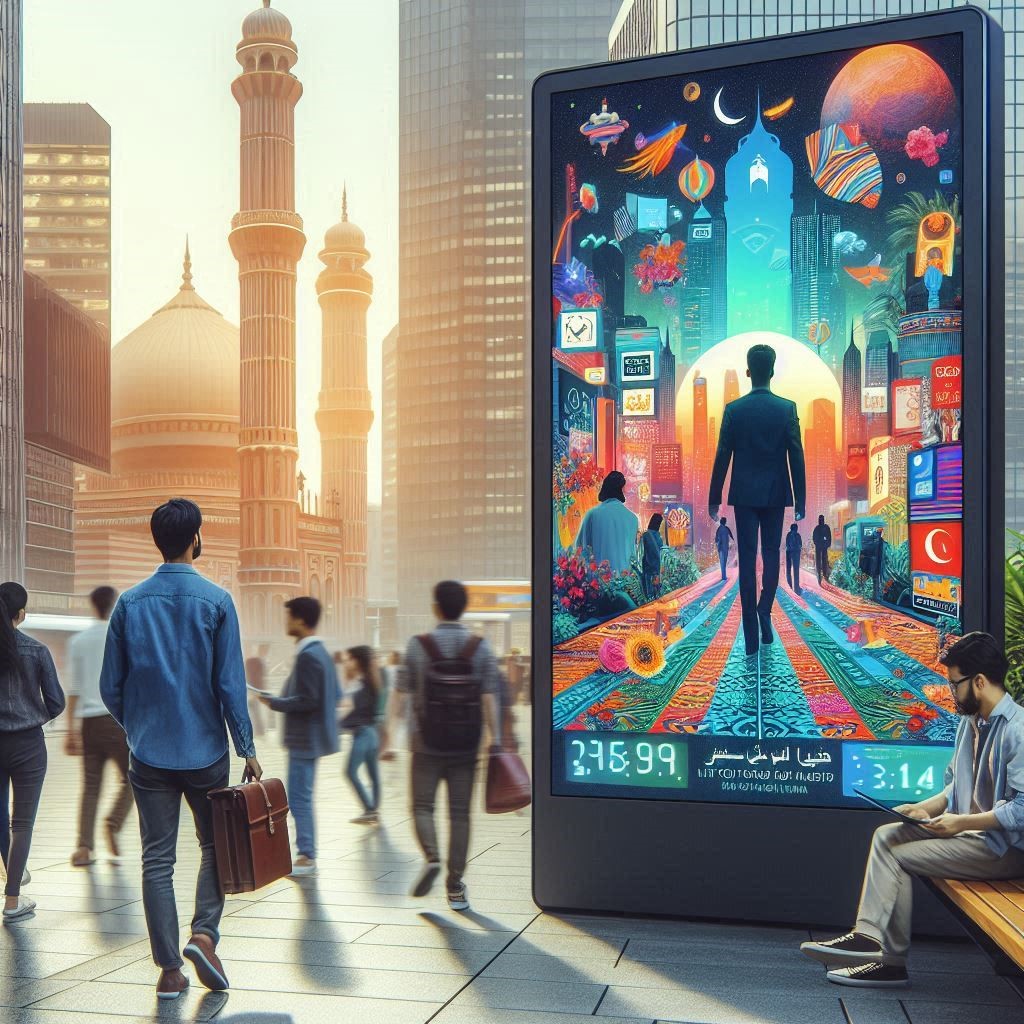The digital signage industry is undergoing a significant transformation, driven by technological advancements and evolving consumer behaviors. As businesses seek innovative ways to engage audiences, several key trends are emerging. This article explores the adoption of AI and machine learning, integration with IoT, advancements in display technologies, sustainability initiatives, and future predictions for the industry.
Digital Signage Industry Outlook
The global digital signage Industry size is projected to grow from USD 20.1 billion in 2024 to USD 27.3 billion by 2029, registering a CAGR of 6.3% during the forecast period. The rising adoption of digital signage in commercial applications, growing demand for digital signage in infrastructural applications, increasing demand for advanced displays such as 4K and 8K displays and constantly evolving technological advancements related to displays are the major factors propelling the growth of the digital signage market.
Adoption of AI and Machine Learning
Artificial intelligence (AI) and machine learning (ML) are revolutionizing digital signage by enabling more personalized and dynamic content delivery. Businesses can leverage AI to analyze consumer behavior and preferences in real-time, tailoring messages to specific audiences. For instance, smart signage can utilize facial recognition to gauge viewer demographics and adjust content accordingly, increasing engagement and relevance.
Moreover, AI-powered analytics tools are helping companies measure the effectiveness of their campaigns. By processing large amounts of data, these tools can provide insights into viewer interactions, dwell time, and engagement rates, allowing businesses to refine their strategies and optimize ROI.
Integration with IoT
The Internet of Things (IoT) is playing a pivotal role in enhancing the capabilities of digital signage. By connecting digital displays to the broader IoT ecosystem, businesses can synchronize content across multiple platforms and devices. For example, digital signage can interact with mobile devices, providing targeted offers to customers as they walk by.
Additionally, IoT integration allows for real-time updates based on external factors. A digital menu board in a restaurant can automatically update prices based on inventory levels or weather conditions. This connectivity not only improves operational efficiency but also enhances customer experience by providing timely and relevant information.
Download PDF Brochure @ https://www.marketsandmarkets.com/pdfdownloadNew.asp?id=513

Advancements in Display Technologies
The display technology landscape is evolving rapidly, with innovations that enhance visual appeal and functionality. High Dynamic Range (HDR) and 4K resolution displays are becoming standard, offering vibrant colors and sharp images that capture viewer attention. OLED technology is also gaining traction, providing deeper blacks and improved contrast ratios.
Furthermore, flexible and transparent displays are emerging, allowing for creative installations that blend seamlessly with the environment. These advancements not only enhance aesthetics but also open new possibilities for storytelling and branding.
Sustainability and Eco-Friendly Solutions
As businesses become more aware of their environmental impact, sustainability has emerged as a critical trend in the digital signage industry. Companies are increasingly prioritizing eco-friendly solutions, from energy-efficient displays to recyclable materials.
LED technology, for instance, is favored for its low energy consumption and longevity compared to traditional displays. Additionally, the use of solar power in signage installations is gaining popularity, particularly in outdoor applications. By adopting these sustainable practices, businesses can reduce their carbon footprint and appeal to environmentally conscious consumers.
Future Trends and Predictions
Looking ahead, several trends are poised to shape the future of digital signage.
- Augmented Reality (AR) and Virtual Reality (VR): The integration of AR and VR technologies will offer immersive experiences, allowing customers to interact with products in novel ways. Imagine a retail store where shoppers can visualize furniture in their homes using AR displays.
- Data Privacy and Security: As digital signage becomes more connected, concerns regarding data privacy will intensify. Businesses will need to prioritize secure data practices to maintain consumer trust.
- Hyper-Personalization: The demand for hyper-personalized experiences will continue to grow. AI and ML will enable even more granular targeting, allowing businesses to deliver highly specific messages based on individual preferences.
- Adaptive Content: Future signage will likely feature adaptive content that changes not only based on viewer demographics but also in response to environmental cues such as weather, time of day, or location.
The digital signage industry is at a crossroads of innovation and creativity. The adoption of AI, integration with IoT, advancements in display technologies, and a commitment to sustainability are driving the industry forward. As these trends evolve, businesses that embrace these innovations will not only enhance customer engagement but also position themselves as leaders in an increasingly competitive landscape. The future of digital signage promises exciting opportunities for creativity and connection, making it an essential tool for businesses looking to thrive in the digital age.
FAQ
1. What is digital signage?
Digital signage refers to the use of digital displays, such as LED screens and LCDs, to convey information, advertisements, or other messages to an audience in a visually engaging manner.
2. How is AI being used in digital signage?
AI is used to analyze viewer data in real-time, allowing businesses to deliver personalized content based on demographics and preferences. It also enhances analytics, helping companies measure engagement and optimize their strategies.
3. What role does IoT play in digital signage?
IoT enables digital signage to connect with other devices and systems, allowing for synchronized content delivery and real-time updates based on external factors, such as weather or inventory levels.
4. What are the latest advancements in display technologies?
Recent advancements include high dynamic range (HDR) and 4K resolution displays, as well as flexible and transparent screens, which enhance visual appeal and open new creative possibilities.
5. How is sustainability addressed in the digital signage industry?
Companies are focusing on eco-friendly practices, such as using energy-efficient LED displays and recyclable materials. Some are also integrating solar power into their signage installations.
6. What are some future trends to watch in digital signage?
Future trends include the use of augmented reality (AR) and virtual reality (VR) for immersive experiences, hyper-personalization of content, adaptive displays that change based on environmental cues, and an increased focus on data privacy and security.
